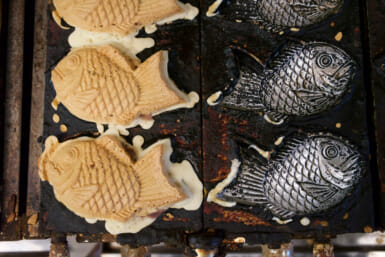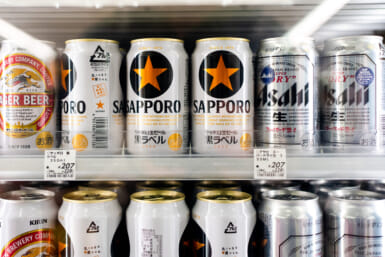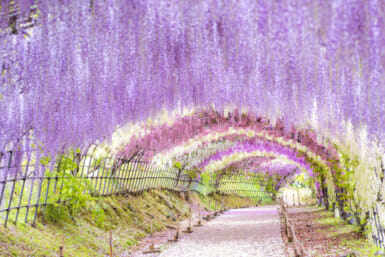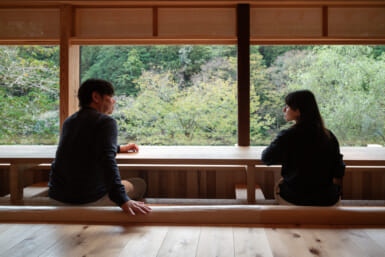Origins of pizza probed—again!
While researching the origin of pizza in Naples a few years back in a most unscientific way — by asking chefs as I ate their products — I discovered the Neopolitans have a very narrow view of what makes a genuine pizza. They believe it must:
1. Be made with buffalo mozzarella cheese.
2. Be baked over a wood fire.
3. Be made in Naples.
I expect immediate disagreement over the first point from Italy to Africa (I had a pizza once in Nairobi which wasn’t bad, except for the slight curry taste) to the U.S. and everywhere else they make the popular cheese-and-tomato pie. I’m sure the wood fire, too, will have its indignant protesters. As for the first point, I don’t think it will get much outery, as most pizza eaters are probably unaware and don’t care what kind of cheese goes into theirs.
In the Pizzeria Romana in Aoyama I found the most valid arguments against the first and third points. The Sabatini brothers, who operate the pizzeria, accept the regulation requiring a wood fire; but argue that buffalo mozzarella should be eaten by itself, as it is too good to mix with other ingredients and be melted. Mozzarella made from cow’s milk, (hey say, is better for pizza because it has a stronger flavor which pervades the pie, no matter the power of the other ingredients.
I agree with them, as I, too, prefer my buffalo mozzarella uncooked and eaten by itself, sliced, with a little cold-pressed virgin olive oil, basil and a touch of fresh ground pepper, perhaps sitting on a slice of tomato.
As for the point about the wood fire, the Sabatini brothers agree with it. In the Pizzeria Romana you see the oak fire blazing away, the chef shoveling in the thin pizza dough with its various fillings and, when it’s done, taking it out with the same wooden spade. What has been produced is a pizza with a thin dough, deliciously crisp and improved with just slight flavor of the wood and a little charring here and there.
The thin crust makes it Roman style as opposed to the Neopolitan style, which has a thicker crust and is divided into sections, each with a different kind of filling. At least that’s the way they were made when I was last there some years ago. I concede time does bring changes.
Unless you’re very hungry, one pizza should be enough for you. If you have a larger-than-average hole in your stomach, you can start with one of the delicious antipastos, like Antipasto Misto All Italiano, a mixture of delightful Italian tidbits; Insalata Di Mare, a savory seafood salad; Prosciutto E Salami, a plate of Italian sausages and cured him, one of my favorites; Vongole Alla Marinara, a dish of clams done the way Italian seamen like them; and Cozze Alia Marinara, a dish of another type of clams done the same way. All are ¥1,300 each.
Now if you feel just this side of starvation, which a glance at the menu can bring on, you will, as I did, order a pasta as preliminary to the main bout with the pizza. I chose my favorite, Penne All’ Arrabbiata, ¥1,100, the spicy dish which, when done Sabalint way, reaches my concept of perfection — spicy enough, yet without too strong a flavor of tomato.
After studying the five pizza choices, I settled on Pizza Con Funghi, ¥1,400, a sapid combination of tomato, mushrooms and cheese lying on a thin, crispy crust. Although I had overestimated my stomach capacity, I managed to finish both plates. It would have been a shame to waste such favorful food. A cup of coffee finished off a more-than-hearty lunch. I didn’t bother to look at the dessert list.
Of course, the wine. I almost forgot. There is no real wine list in the Pizzeria Romana, but there is a bar list, including beer, gin and tonic, dry sherry and something called “Wine Cooler.” I chose the house red, available in the pizzeria. It is the Sabatini’s own Chianti from the vineyards they own in Tuscany. I decided to experiment, since this was dining at its most informal. I ordered a glass of the Chianti, 500 yen — not much risk there — with my pasta.
It was served cool enough, at cellar temperature, the proper temperature for a Chianti, and it did cool off the spiciness of the penna, though the penne did it no good. Next time I’ll order a glass of Frascati, 600 yen, as a white is the accepted wine to accompany a pasta. But the Chianti did cooperate with the pizza. A cup of espresso coffee finished off my lunch.
It was a very tasty and more-than-filling meal for only ¥3,350. With tux and service charge the bill came to something under ¥4,000, a very good food bargain in my opinion.
Of course, I shall return to the Pizzeria Romana, as there are many more items on the menu I should like to try, like some of the desserts I missed. But I shall have to be more circumspect in judging the capacity of my appetite.
Also, I should like to try some of the six spaghetti dishes, ranging in price from ¥1,100 to ¥1,300; a lasagna for ¥1,300; a Cannelloni Del Chef for ¥1,300 yen; and a Risotto Alla Pescatore for ¥1,300. The thought of that makes my mouth water, and the Sabatini rice dishes are excellent.
Pizzeria Romana is in the same Sun Crest Building as the main restaurant, Sabatini’s da Roma, and also in the basement, though you have to go through a different entrance. Don’t worry. Signs you can’t miss point the way.
As for the Sun Crest Building, it is down the block towards Meiji Park from the Hell Commons Building at the corner where Aoyama Dori meets Gaienhigasht Dori. Address is 2-13-5 Kitaaoyama. Telephone number is 402-3812. There is parking in the Bell Commons Building.








